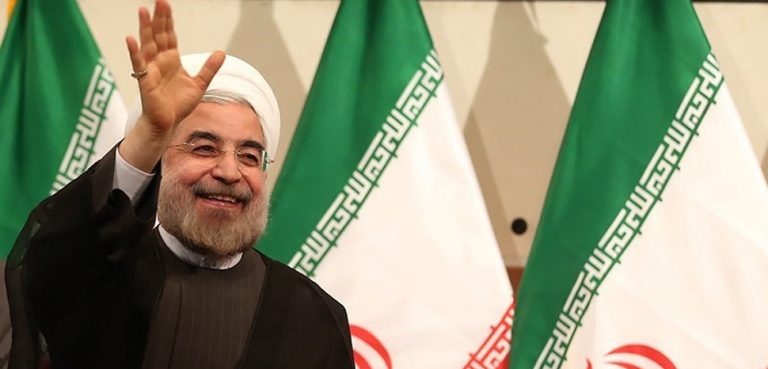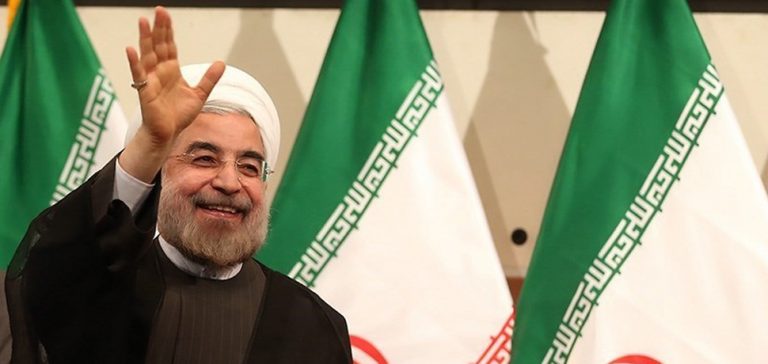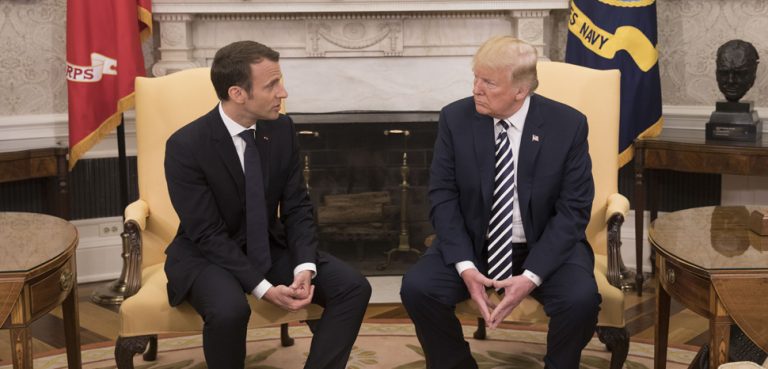The Joint Comprehensive Plan of Action (“JCPOA”), as it is formally known, is the culmination of a decade of intensifying economic sanctions, diplomacy, and negotiations. The deal was finally agreed on 14 July 2015 in Vienna between Iran and major world powers: China, France, Germany, Russia, the EU, the UK and the United States. It was adopted unanimously by the United Nations Security Council on 20 July 2015 as Resolution 2231.
The deal trades a halt in Iran’s nuclear program, along with verification protocols, for relief from economic sanctions and opening to global trade. The Obama administration never fully relieved all US-imposed sanctions; most of the primary sanctions on Iran’s ballistic missile program and the US trade embargo remained in place.
Fast-forward to 8 May 2018 and President Trump’s announcement that he will not sign the sanctions waiver. The US has decided to unilaterally reimpose economic sanctions on the Islamic Republic to be activated in two tranches, in August and November. The November round will hit Iranian oil exports, the lifeblood of the economy. This would be the second time Iran’s oil exports have been surgically targeted by US sanctions, the first being in 2010 under the Obama Administration, which was cited as a major factor in bringing Iran to the table on the nuclear deal. The reimposition of US sanctions has contributed to a slide in the Iranian rial, which has lost approximately two-thirds of its value against the US dollar this year.
The European Response
As recently as 6 August European Union Foreign Minister Federica Mogherini announced that the EU would update its Blocking Statute to protect European firms engaging in legitimate business with Iran, going as far as to encourage Europe’s small and medium enterprises to “increase business with Iran,” referring to the action as a “security priority.” The Blocking Statute is designed to protect European firms from the effects of extra-territorial sanctions imposed by the United States; that is, sanctions the US seeks to impose outside of its jurisdiction. The EU Blocking Statute has yet to be tested. Mogherini further stated that the remaining parties to the deal would commit to maintaining financial channels for the export of Iranian oil and gas. On 23 August, the EU commissioned its first round of financial support for Iran totaling EUR 18 million. This is part of a EUR 50 million package to support private enterprise in the country.
One of the key problems for the EU and European companies is their exposure to, and dependence on, the US dollar. The global financial system is based on the dollar and those transactions eventually wind up remitting through the US Federal Reserve, which is why the United States can exert extra-territorial leverage. The first option being tabled by Germany, France and the UK, is around establishing an alternate financial channel in order to facilitate trade with Iran. This could take the form of a legal entity, a Special Purpose Vehicle (“SPV”) – essentially a barter trade account – which would hold Euro-denominated credits from Iranian exports to spend with European suppliers. High-level meetings held on the sidelines of the United Nations General Assembly in September 2018 have seen Mogherini and Iran’s Foreign Minister Javad Zarif announce the creation of such an SPV. The final details are yet to be released. This alternate financial channel is the best option for ensuring continued trade and potentially saving the nuclear deal.
With the unique creation of this SPV, European companies can conduct legitimate business with Iran. The SPV has the support of the remaining parties to the Iran Deal: Russia, France, Germany, China, the UK and the EU. The European Union will be in the spotlight as to whether they can stand firm in the face of pressure from the US. It will be a telling moment for the EU leadership, which will have lasting repercussions either way.
The Role of China
Arguably the most influential party to the agreement is China, as Iran’s largest trading partner and the biggest export market for Iranian crude. The European Union has in recent years been looking East, cozying up to Beijing as there is a stronger realization that trade with China is paramount to Europe’s future prosperity. At this stage, the Chinese have indicated they are not going to be cutting crude purchases from Iran. The China-Iran relationship is transactional in nature and Beijing sees Iran as a “valuable non-US-aligned partner in a geostrategic region,” according to RAND’s Scott Harold. Harold also asserts that: both countries share “a skepticism of the US-led international order.” China has repeatedly thwarted international (EU and US) pressure to comply with international sanctions regimes imposed on Iran. In 2012 when the Obama Administration again pressured China to cut imports of Iranian oil Beijing voiced its opposition, though ultimately agreed to lower purchases by 20 percent.
The Chinese leadership has been taking concrete steps toward internationalizing the yuan, which importantly means paying for crude oil purchases in their own currency. As the world’s largest importer of crude, this is significant. In March this year, the Chinese launched crude oil futures on the Shanghai stock exchange, denominated in yuan. As of July, the yuan-based crude futures contracts already had won a sizeable 14.4 percent market share. China has already tested yuan-based payments for crude with both Russia and Iran via the Bank of Kunlun, a subsidiary of China National Petroleum Corporation.
Alternate payment channels are now widely being tabled. In addition to the EU proposal for the creation of an SPV, Russia, Turkey, and Iran have been in discussions – as recently as September – about ditching the US dollar in transactions between the three nations. Over the past five years, Iran’s trade with Russia has averaged USD 1.8 billion per annum, and with Turkey USD 6.6 billion. Second, there is the option of utilizing a bank with no exposure to US dollars. There is precedent for this in Russia. Rossiya and SMP, both Russian banks with close ties to Putin, have been under US sanctions since 2014. In that time, both banks have seen increases in their assets, primarily based on financing construction projects and establishing retail banking operations in Crimea.
What Does This Mean for European Businesses?
European businesses have a new 80-million-strong and largely untapped market to enter. Despite decades of economic sanctions, Iran is the 26th largest economy in the world (2nd in MENA to Saudi Arabia) with a gross domestic product (GDP) of USD 440 billion. This ranks on par with Thailand, slightly behind Poland, and ahead of Austria, Norway, and Nigeria. The Iranian economy grew by 13.4 percent in 2016 and 4.3 percent in 2017. Between 2000 and 2011, the economy averaged over 5 percent growth. However, with crude sales sliding over the past three months and uncertainty over the EU’s financial vehicle, the Iranian economy is forecast to contract by about 1-1.5 percent over the next three years.
These numbers alone make Iran a genuinely attractive emerging market. It is no coincidence that European majors rushed into the country after the JCPOA was formalized. Airbus signed an agreement to deliver 100 planes, Daimler entered into a joint-venture with an Iranian automotive manufacturer to build Mercedes trucks, French oil and gas firm Total earmarked USD 1 billion for Phase-2 of South Pars, and Swiss company Stadler Rail had a USD 1.4 billion deal for the production of railway cars. All of these deals have been withdrawn from or placed ‘on hold.’ Large European multinationals face uncertain regulatory risks at present. The threat stems from secondary sanctions imposed by the US given their large exposure to the US market and the US financial system, plus potential global brand reputation risk.
The situation is markedly different for European small and medium enterprises. Those with low- to no exposure to the US market could benefit from the fast-growing Iranian market. The EU is actively encouraging this strategy. It remains to be seen how much, and what type of, support the EU is willing to provide, and the effectiveness and strength of the Blocking Statute. For Iran, increased European business offers some hedging against the overwhelming Chinese influence in the economy by diversifying their trading partners, and also serves to internationalize their position with increased vested interests. That said, the EU is mired with its own contentious issues: the ongoing migrant crisis, surging populist parties including the rise of the Alternative for Germany (“AfD”), Brexit less than six months away, and upcoming European parliament elections in 2019.
Ultimately, international public opinion presently sides with Iran, not the US. There is growing resentment even among Western allies of US unilateral and extraterritorial sanctions. Beijing’s drive to increase international acceptance of the renminbi coupled with the EU’s proposal to build a new financial mechanism to evade the US financial system will only serve to strengthen the knowledge base of how global markets will operate in a post-USD dominated system.
The opinions, beliefs, and viewpoints expressed by the authors are theirs alone and don’t reflect the official position of Geopoliticalmonitor.com or any other institution. Ben H. Quandt is the director and head of research for Pequod Advisory Group. www.pequodadvisors.co.




